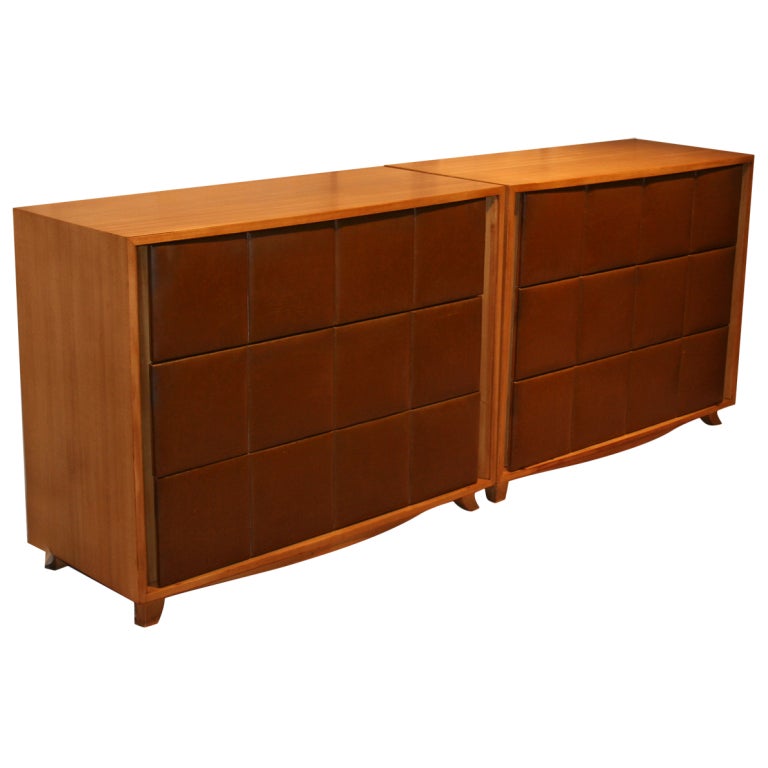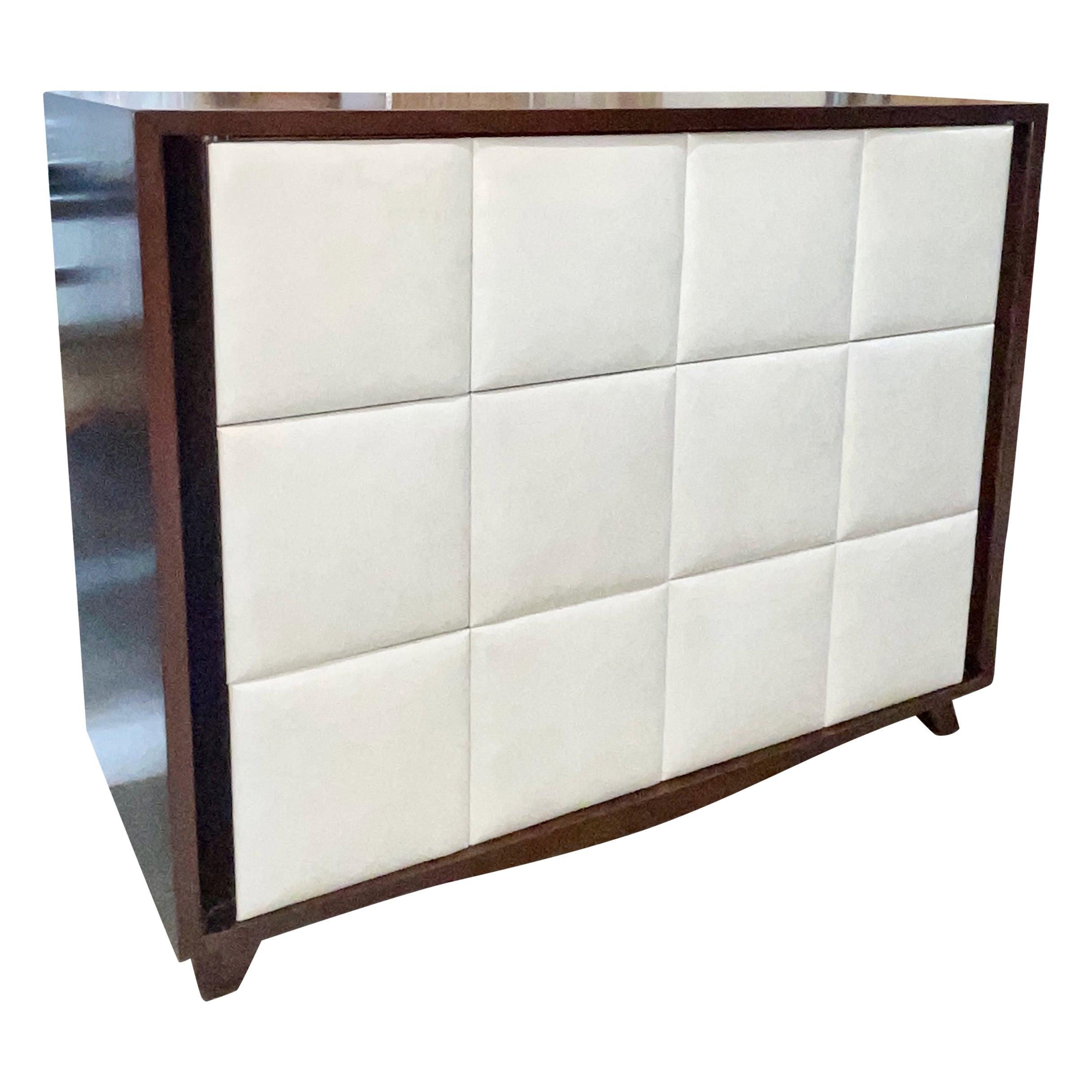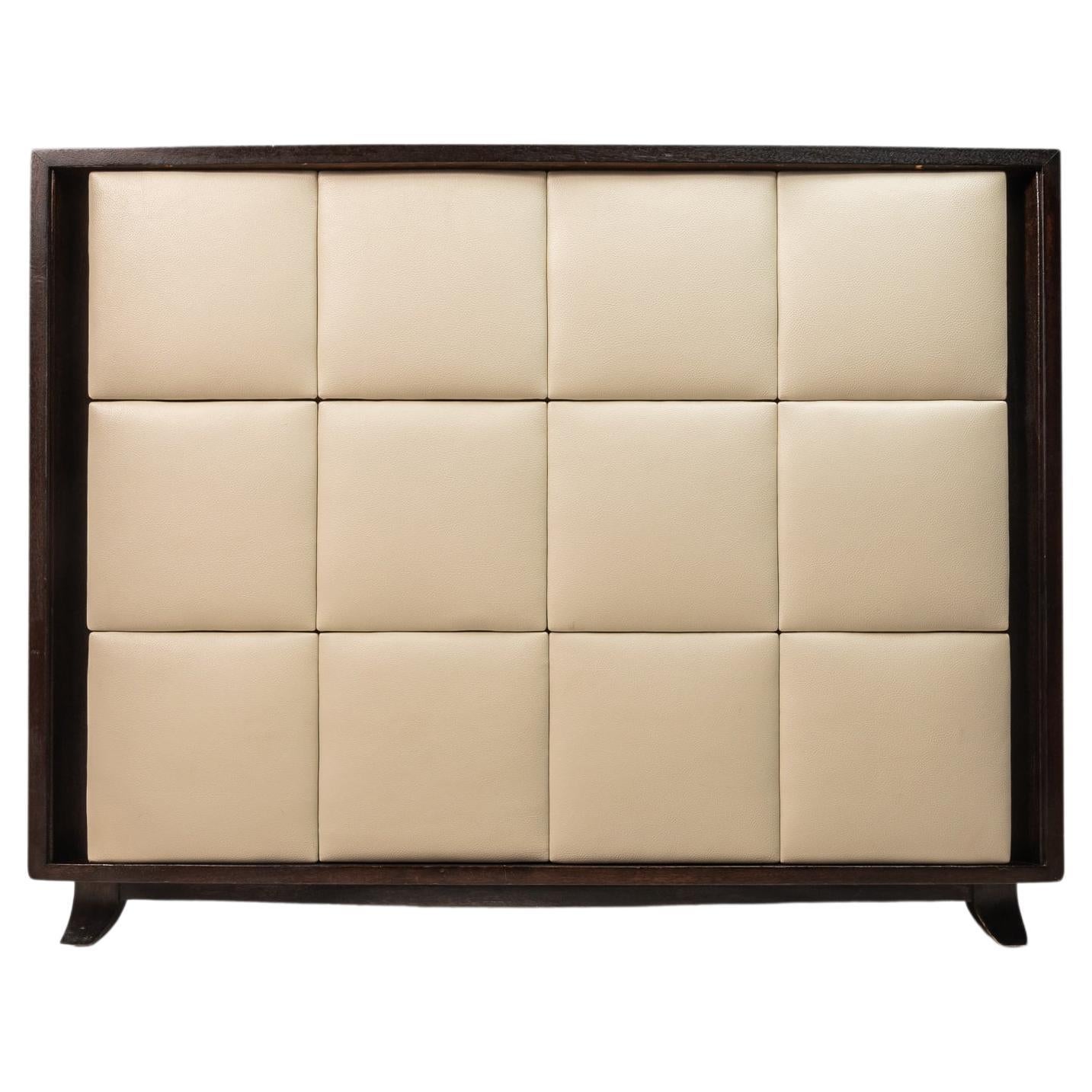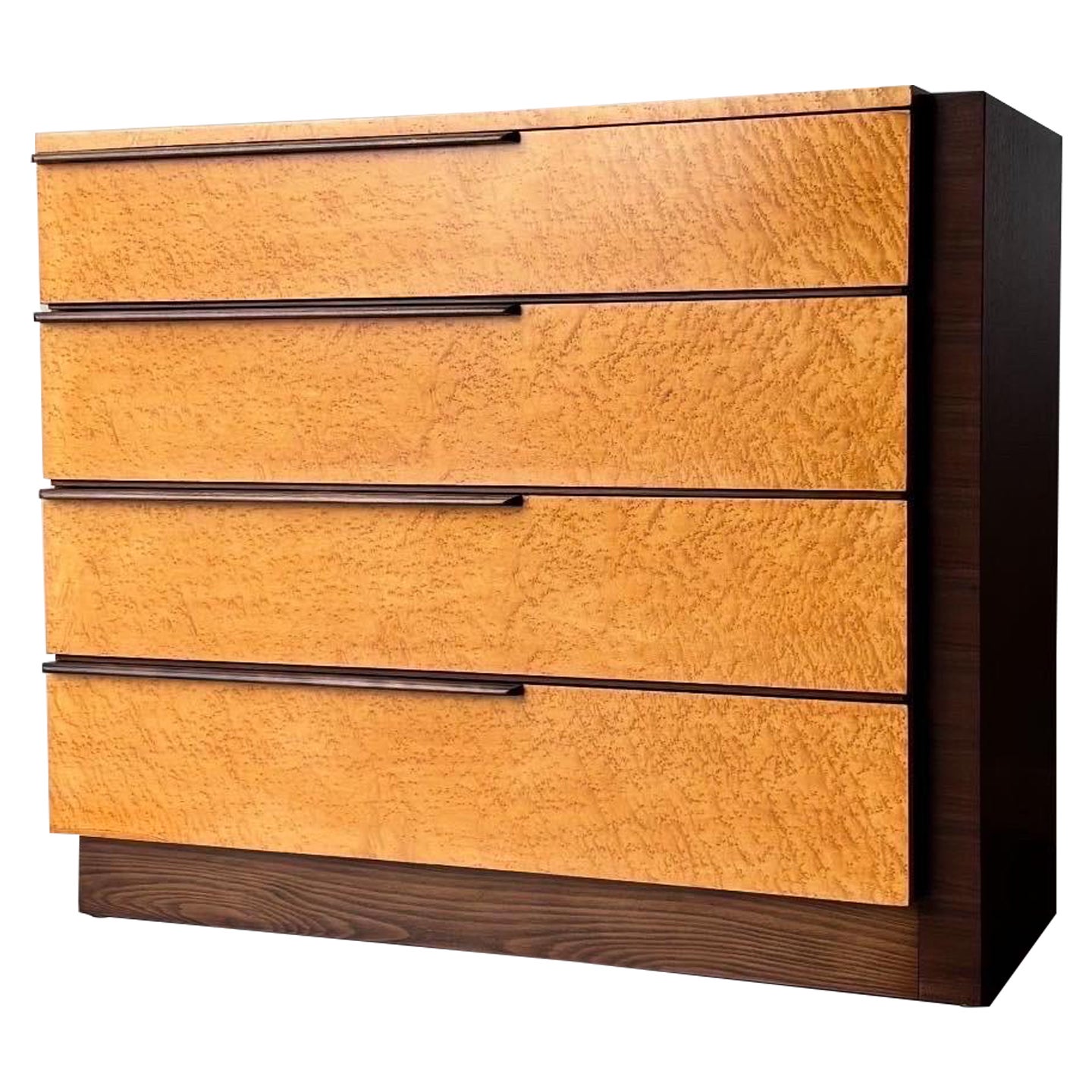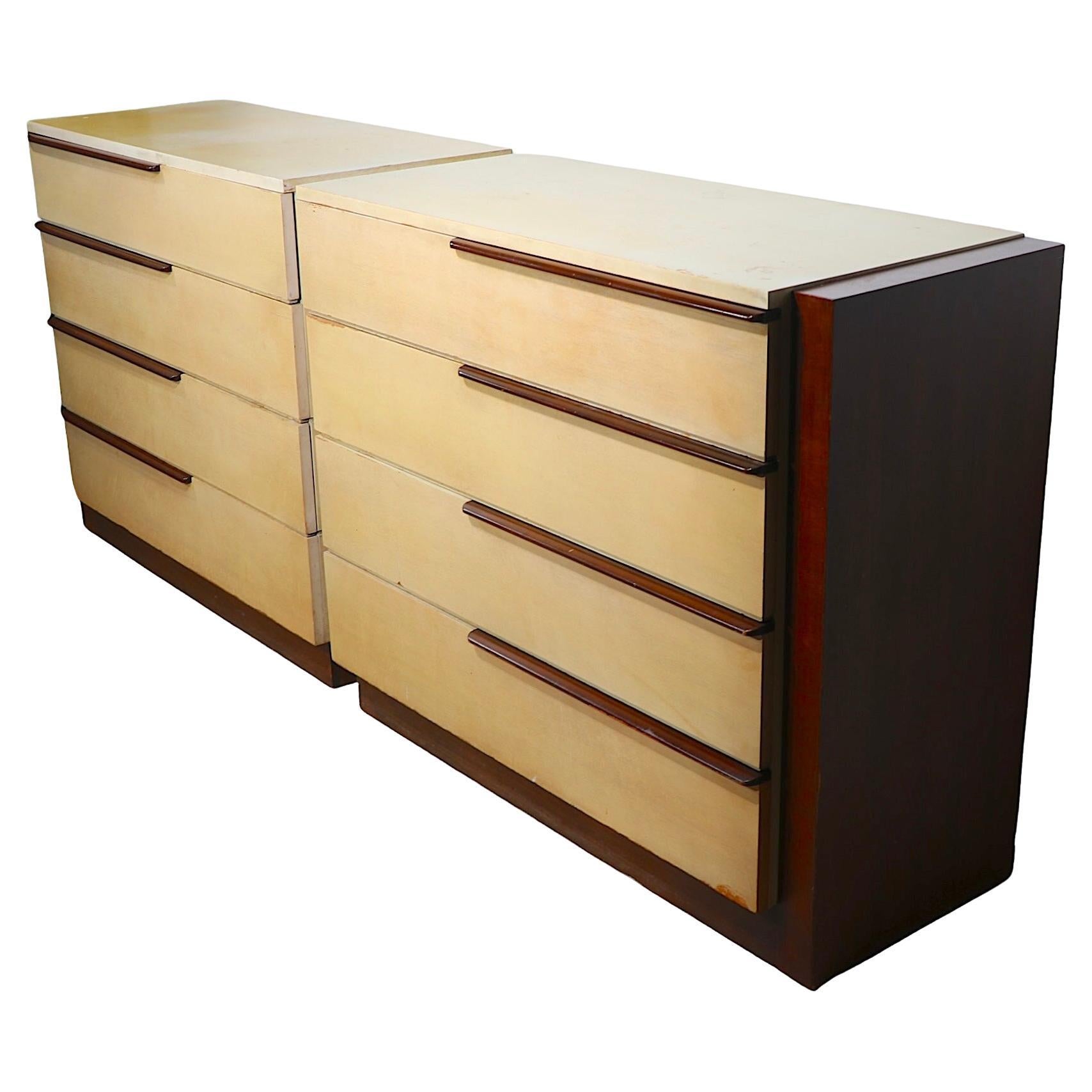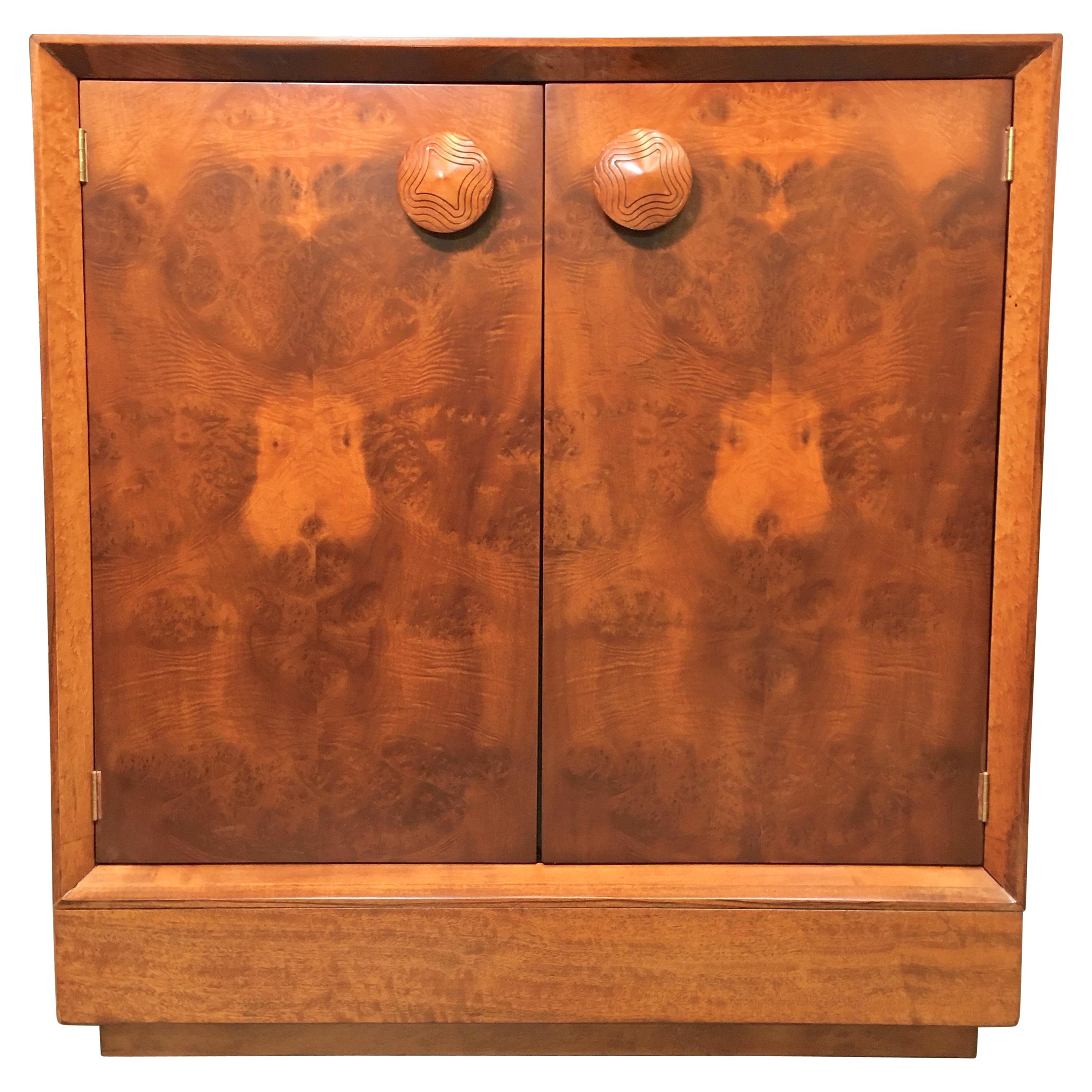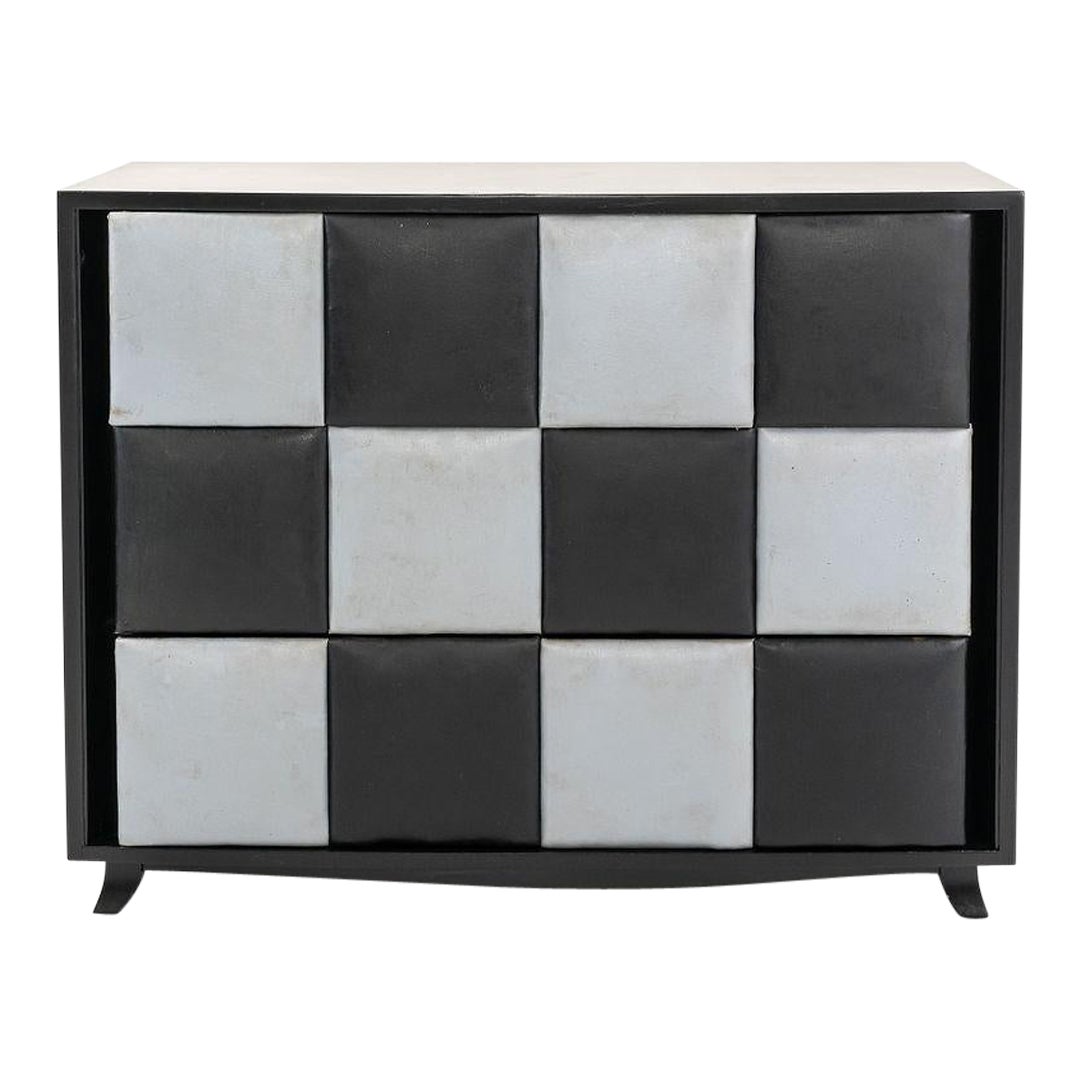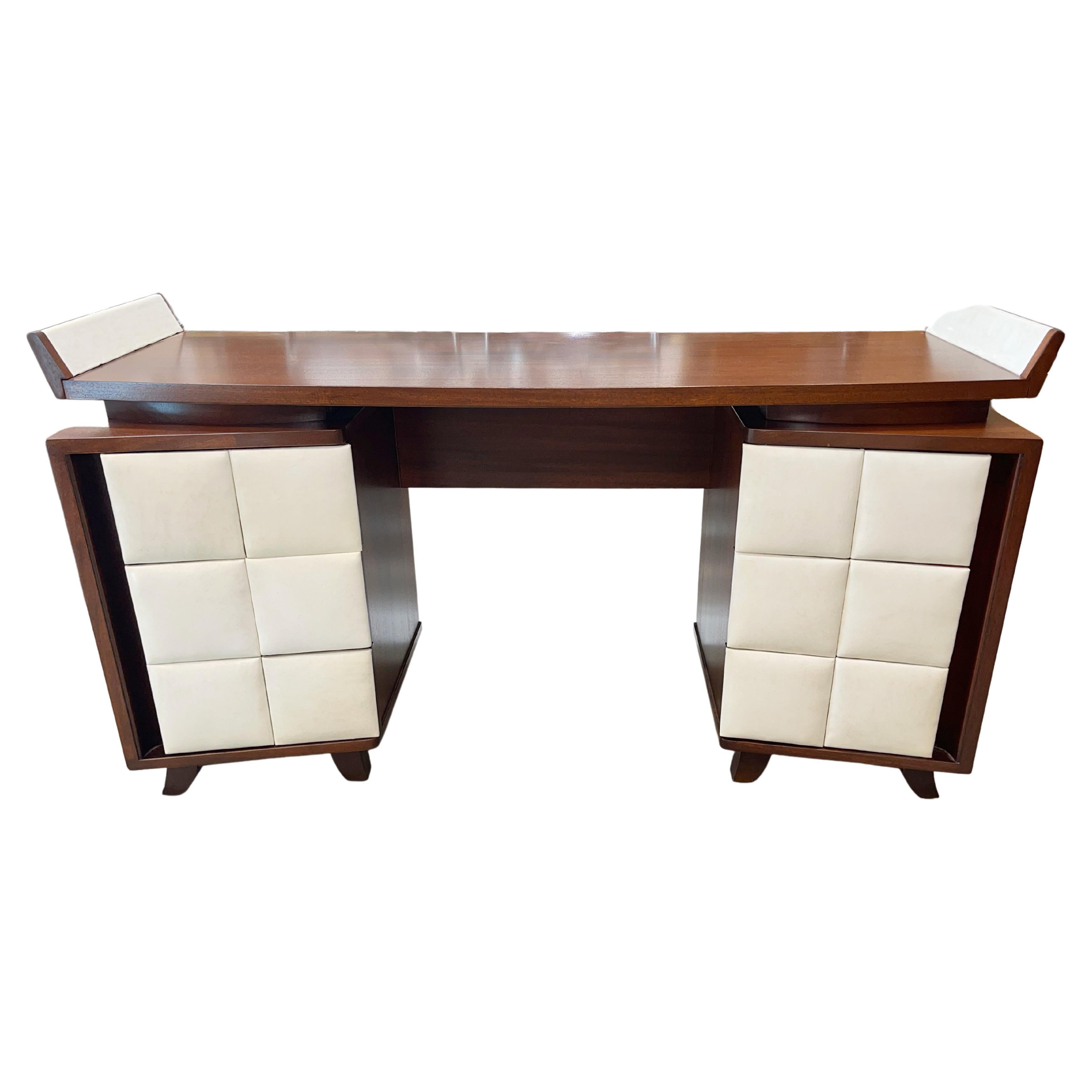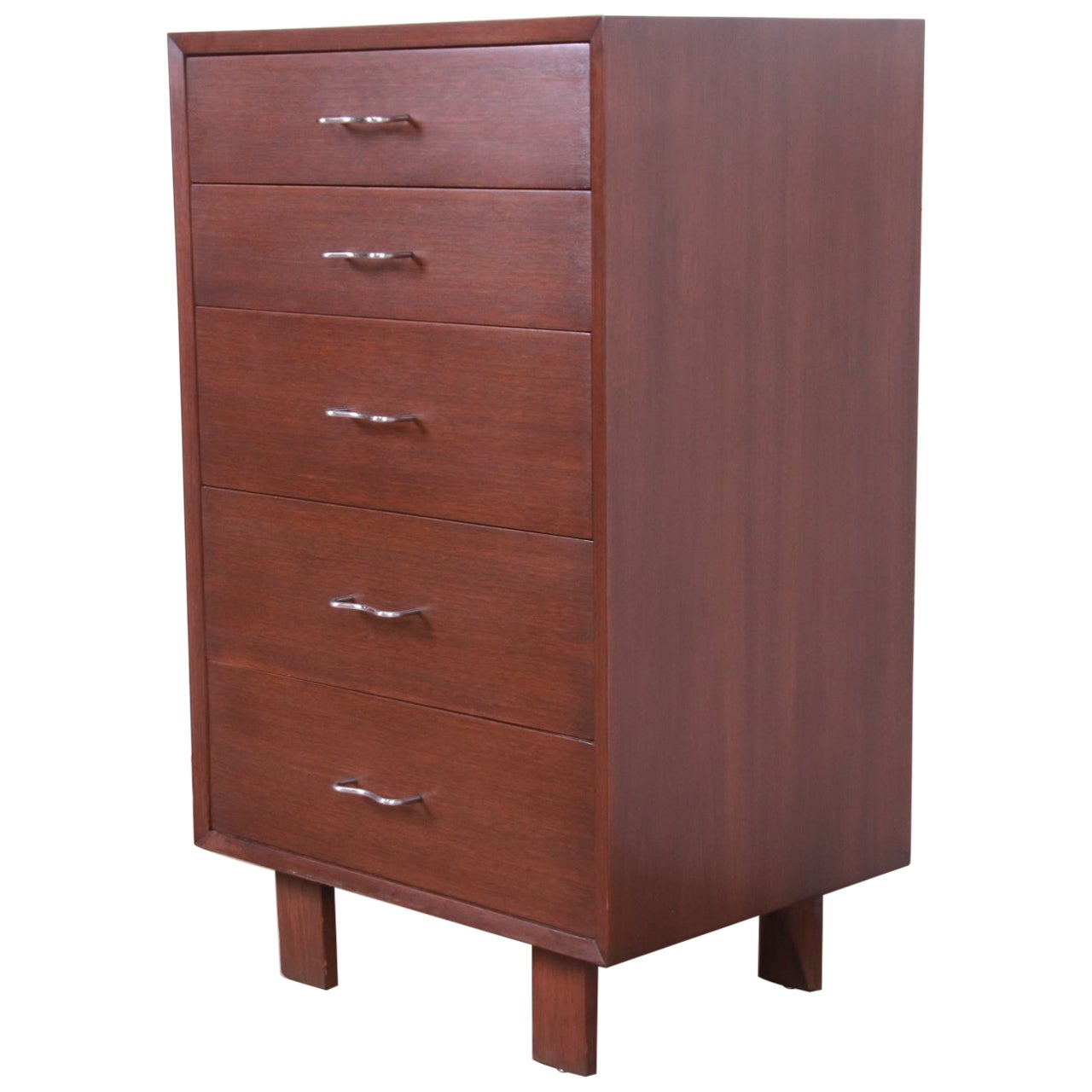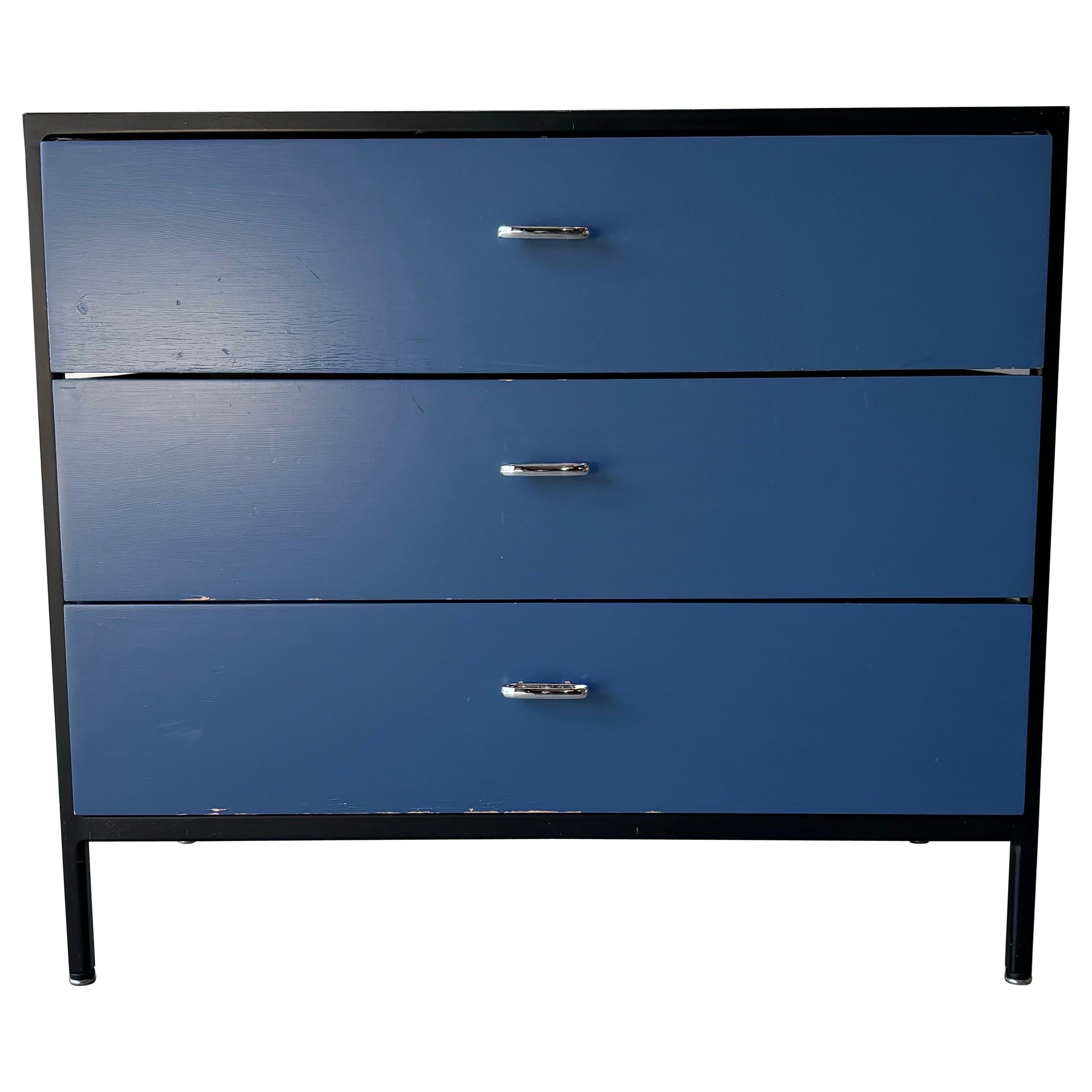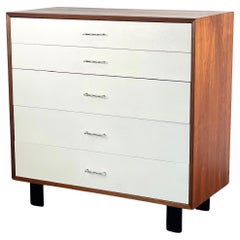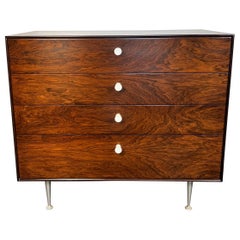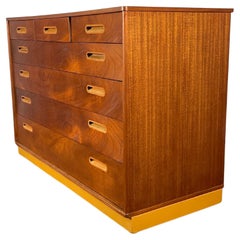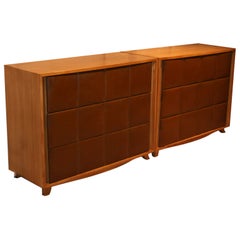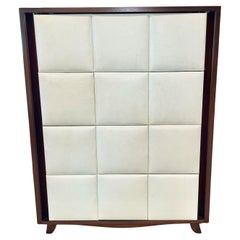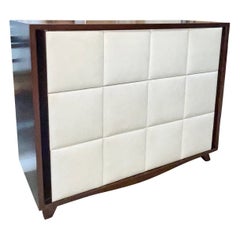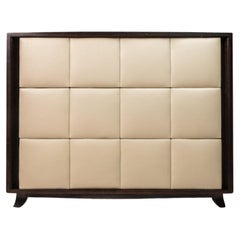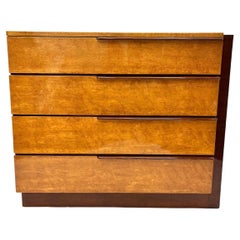
Gilbert Rohde Chest of Drawers for Herman Miller in Birdseye Maple and Mahogany
View Similar Items
Gilbert Rohde Chest of Drawers for Herman Miller in Birdseye Maple and Mahogany
About the Item
- Creator:Herman Miller (Manufacturer),Gilbert Rohde (Designer)
- Dimensions:Height: 36 in (91.44 cm)Width: 43 in (109.22 cm)Depth: 19 in (48.26 cm)
- Style:Mid-Century Modern (Of the Period)
- Materials and Techniques:
- Place of Origin:
- Period:
- Date of Manufacture:circa 1940s
- Condition:Refinished.
- Seller Location:San Diego, CA
- Reference Number:1stDibs: LU6417238025462
Gilbert Rohde
Pioneering self-taught industrial designer, writer and teacher Gilbert Rohde helped define the earliest phase of modernism in the United States. He is one of the most influential figures of 20th-century design and is credited with helping legendary mid-century modern furniture manufacturer Herman Miller avert financial disaster during the Great Depression.
Born in New York City, Rohde studied painting at the Art Students League after high school. He found lucrative employment, first as a political cartoonist and then as a catalog illustrator for American department stores. He was particularly enthralled with drawing furnished interiors.
Rohde began to design furniture in his spare time. He traveled to the Bauhaus school in Germany and the International Exhibition of Modern Decorative and Industrial Arts in Paris, and drew on the Art Deco movement and the work of designers such as Émile-Jacques Ruhlmann in his early pieces. Rohde opened his own studio in 1929 and secured private and commercial commissions. His clients would come to include formidable furniture makers Heywood-Wakefield and Troy Sunshade, and his innovative bentwood furnishings for them were practical and intended for the modern consumer.
In 1930, Rohde met Herman Miller founder D.J. De Pree in the company’s Michigan showroom during a business trip. By then, Rohde had a long list of prominent clients and his furniture had been exhibited in museums and galleries. Herman Miller was weathering a devastating slowdown in business, and the American furniture industry had generally been hit hard by the Great Depression.
Rohde boldly informed De Pree that the brand’s furniture had become outdated, which was part of the reason the company was in financial jeopardy. Homes had become smaller and could no longer accommodate the large Gothic– and Victorian–style furnishings and traditional reproductions of period bedroom suites that Herman Miller was offering at the time, Rohde explained.
Rohde secured a contract to design for the Michigan manufacturer. He championed the use of exotic woods and tubular steel, and created streamlined, unadorned bedroom furniture for Herman Miller — collections that included convenient vanities, which were unconventional pieces for De Pree’s company back then.
In 1933, Rohde oversaw the design of two bedrooms featuring sleek Herman Miller furniture — including innovative storage pieces he designed — as part of an International–style exhibit at the 1933 Chicago World’s Fair. The installation garnered acclaim for De Pree’s brand all over the world and afforded Rohde the opportunity to execute on his visionary ideas in front of a global audience. Rohde later designed lighting, seating and more for Herman Miller and was extensively involved in the company's marketing strategy and other areas of the business.
In 1942, Herman Miller, anticipating a postwar economic boom, began to produce office furniture for the first time, but its legacy is in the home. Working with legendary designers such as Ray and Charles Eames, Isamu Noguchi and Alexander Girard, the manufacturer fostered some of the boldest expressions of what we now call mid-century modern style.
Find vintage Gilbert Rohde coffee tables, lounge chairs, table lamps and other items on 1stDibs.
Herman Miller
No other business of its kind did more than the Herman Miller Furniture Company to introduce modern design into American homes. Working with legendary designers such as Charles and Ray Eames, George Nelson and Alexander Girard, the Zeeland, Michigan-based firm fostered some of the boldest expressions of what we now call mid-century modern style. In doing so, Herman Miller produced some of the most beautiful, iconic and, one can even say, noblest chairs, sofas, tables and other furniture ever.
Founded in 1923, Herman Miller was originally known for grand historicist bedroom suites: heavily ornamented wood furniture that appealed to a high-minded, wealthier clientele. The company — named for its chief financial backer — began to suffer in the early 1930s as the Great Depression hit, and D.J. De Pree, the company’s CEO, feared bankruptcy. In 1932, aid came in the form of Gilbert Rohde, a self-taught furniture designer who had traveled widely in Europe, absorbing details of the Art Deco movement and other modernist influences. After persuading De Pree that the growing middle class required smaller, lighter household furnishings, Rohde set a new course for Herman Miller, creating sleek chairs, tables and cabinetry that were the essence of the Streamline Moderne style.
Rohde died suddenly in 1944. The following year, De Pree turned to George Nelson, an architect who had written widely about modern furniture design. Under Nelson’s leadership, Herman Miller would embrace new technologies and materials and audacious biomorphic forms.
Some of the pieces the company produced are now emblems of 20th century American design, including the Eames lounge chair and ottoman and Nelson’s Marshmallow sofa and Coconut chair. Such instantly recognizable furnishings have become timeless — staples of a modernist décor; striking, offbeat notes in traditional environments.
Find a range of vintage Herman Miller office chairs, desks, coffee tables and other furniture on 1stDibs.
More From This Seller
View AllVintage 1950s American Mid-Century Modern Dressers
Metal
Vintage 1950s American Mid-Century Modern Dressers
Aluminum
Vintage 1950s American Mid-Century Modern Dressers
Mahogany
Vintage 1960s American Mid-Century Modern Coffee and Cocktail Tables
Slate, Chrome
Vintage 1950s American Mid-Century Modern Chairs
Metal
Vintage 1950s American Mid-Century Modern Lounge Chairs
Metal
You May Also Like
20th Century American Commodes and Chests of Drawers
Mahogany, Naugahyde
Vintage 1940s American Art Deco Commodes and Chests of Drawers
Faux Leather, Mahogany
Vintage 1940s American Art Deco Commodes and Chests of Drawers
Faux Leather, Mahogany
Vintage 1940s American Modern Dressers
Leather, Mahogany
Vintage 1930s Art Deco Dressers
Birdseye Maple
Vintage 1930s American Art Deco Dressers
Birdseye Maple, Walnut
Recently Viewed
View AllRead More
The 21 Most Popular Mid-Century Modern Chairs
You know the designs, now get the stories about how they came to be.
A Guide to Herman Miller’s Most Iconic Furniture
The prolific manufacturer has partnered with many of the world’s top designers since opening its doors in 1923. Here are some of the company’s greatest hits, which helped transform the American home and office.
